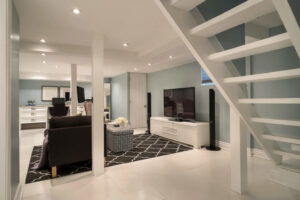Framing Success: How Commercial Carpentry Shapes the Foundations of High-Performing Businesses
When people think of successful businesses, they often picture smart leadership, innovative products, or loyal customers. But behind all the boardroom brilliance and digital transformation lies something far more physical — the very structure businesses operate in. Commercial carpentry, often underestimated, plays a vital role in how companies function, flourish, and face the future.
From the bones of a building to the fine finishes of an executive suite, commercial carpentry frames not just the physical environment but also a company’s brand, productivity, and potential. Whether it’s a buzzing retail store, a state-of-the-art office, or a sprawling warehouse, it all begins with solid, strategic carpentry.
What Is Commercial Carpentry, Really?
Commercial carpentry goes well beyond hammer and nails. It involves the design, construction, and installation of building components tailored for commercial properties such as:
- Office buildings
- Shopping centres
- Hotels
- Hospitals
- Industrial facilities
- Schools and universities
Commercial carpenters don’t just build—they engineer, collaborating closely with architects, engineers, and contractors to bring large-scale visions to life. Their work includes everything from constructing structural frames and partition walls to installing custom cabinetry, doors, ceilings, staircases, and architectural trim.
Why It Matters to Business Success
Imagine walking into a hotel lobby that feels cramped and dark, or into a retail space where shelves don’t align or wobble every time you touch them. These are not just design failures—they’re business barriers.
Here’s how expert commercial carpentry helps shape high-performing businesses from the ground up:
1. Efficient Layouts Enhance Productivity
The placement of walls, rooms, and walkways dramatically affects how people move and work. Commercial carpenters collaborate with designers to create optimized layouts that support a company’s workflow, staff interaction, and customer service. An open-plan office might encourage collaboration, while private meeting pods ensure confidentiality.
A well-designed and well-built workspace translates into smoother operations, fewer bottlenecks, and more productive teams.
2. Durability Reduces Maintenance and Downtime
Every business needs to keep its doors open. Frequent repairs or structural issues eat into productivity and revenue. Commercial carpentry focuses on long-term performance, using high-quality materials and techniques that withstand heavy foot traffic, equipment loads, and wear-and-tear from daily operations.
According to a study by IBISWorld, durable construction practices contribute significantly to lowering lifecycle costs for commercial buildings—cutting repair and operational expenses by as much as 30% over 20 years.
3. Aesthetic Appeal Builds Brand Perception
Your physical space speaks volumes. From timber feature walls to sleek reception counters, custom woodwork sets the tone for how clients, customers, and employees perceive your business. It builds trust, communicates professionalism, and reinforces brand identity.
Whether it’s the warm feel of reclaimed wood in a café or the minimalist elegance of white oak in a law office, commercial carpentry makes the brand visible.
4. Safety and Compliance
Commercial carpenters are well-versed in building codes, fire safety regulations, and accessibility standards. Their work ensures that everything from staircases to ramps meets legal requirements, helping businesses avoid costly penalties or lawsuits.
This proactive attention to safety doesn’t just meet legal needs—it also ensures a safe and welcoming environment for employees and visitors alike.
Key Areas Where Commercial Carpentry Makes a Difference
Let’s break down some critical spaces within businesses where commercial carpentry plays a major role:
1. Reception and Entry Areas
First impressions are everything. Custom-built reception desks, stylish seating areas, and striking wall panels welcome guests with a professional look. Carpenters can also integrate lighting, signage, and even tech installations into entryways for a seamless experience.
2. Workspaces and Offices
Well-crafted desks, partition walls, built-in storage, and ergonomic designs all fall within a commercial carpenter’s toolbox. These features improve efficiency, reduce clutter, and promote a healthier, more organized environment.
3. Retail Fit-Outs
In retail, layout and appearance drive revenue. Shelving, displays, counters, and dressing rooms must be both practical and attractive. Skilled carpentry ensures your products are presented in a way that encourages browsing and buying.
4. Hospitality and Dining
In hotels, cafes, and restaurants, the “feel” of the space matters. Carpenters create everything from custom booths and bar tops to cabinetry and decorative ceiling beams—contributing to the atmosphere that keeps guests coming back.
5. Medical and Educational Facilities
Precision and cleanliness are essential here. Commercial carpentry in hospitals and schools includes laboratory counters, cleanable cabinetry, patient room furniture, and more—all tailored to strict standards for hygiene, durability, and safety.
Trends in Commercial Carpentry That Boost Business Performance
As the business world evolves, so too does commercial carpentry. Here are a few modern trends shaping the industry:
1. Sustainable Materials and Green Building
Eco-consciousness isn’t a trend—it’s a standard. Today’s commercial carpenters are incorporating sustainable materials like bamboo, recycled timber, and low-VOC finishes. Green building certifications like LEED reward businesses that use environmentally responsible carpentry practices.
In fact, according to Green Building Council data, green buildings save up to 25% in energy costs and contribute to higher employee satisfaction and retention.
2. Modular and Prefabricated Construction
Prefabrication allows carpentry components to be built offsite and assembled onsite, reducing disruption and project timelines. This method has become a game-changer in fast-moving sectors like retail and tech.
3. Smart Integration
Today’s workplaces are tech-driven. Commercial carpentry integrates smart technology like touchless access panels, cable management systems, and digital signage into the physical framework of a space. These integrations support efficiency and modernization.
Choosing the Right Commercial Carpentry Partner
A high-performing business deserves high-quality carpentry. Here are some tips for choosing the right commercial carpenter or contractor:
- Experience in your industry: Someone who’s worked on retail stores may not be the best fit for hospitals.
- Portfolio of past projects: Look at photos and case studies.
- Strong references: A good reputation speaks louder than advertising.
- Licensing and insurance: Always ensure they meet legal and safety standards.
- Willingness to collaborate: The best carpenters work closely with designers, electricians, and engineers to create unified results.
Final Thoughts: The Quiet Power Behind the Scenes
Commercial carpentry may not always be in the spotlight, but it’s absolutely foundational to business success. It influences how customers experience your brand, how staff perform their roles, and how smoothly your daily operations run.
Just like framing a painting brings it to life, framing a business space—literally—sets the tone for everything that happens within it.
So, next time you walk into a business and admire its clean lines, sturdy structures, or stylish touches, remember this: a skilled commercial carpenter probably made it all possible.













